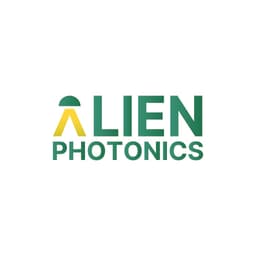


Yb:YAG Dual Band DBHR Mirrors
Yb:YAG Dual-Band DBHR Mirrors are designed to reflect two wavelengths of Yb:YAG laser - fundamental (1030 nm) and harmonic 515, 343 nm. Custom material, size, shape, AOI, LIDT and other characteristics available.
Estimated Shipping Date: May 15, 2025 - May 29, 2025
* - Shopping cart pricing is based on the most recent pricing and it is NOT ORDERING, but requesting an official quotation which should typically reach You within 1-2 business days.
- Variants
- Description
- Applications
- Characteristics
Yb:YAG Dual-Band DBHR Mirrors: purpose, main function, customization (GDD, LIDT, Reflection, etc.), production and alternatives
What is function and porpose Yb:YAG Dual-Band Mirrors?
Main function of Yb:YAG Dual-Band Mirror is to effectively reflect two Yb:YAG laser wavelengths (fundamental wavelength 1030 nm and/or it’s harmonics, such as 515 nm, 343 nm, etc.). These mirrors reflect both wavelengths at the designed angle of incidence allowing efficient beam control within optical system. This feature allows single DBHR mirror to replace two Yb:YAG Laser Line (HR) mirrors
Custom Yb:YAG DBHR Mirrors
Alien Photonics DBHR mirrors can be custom size, shape, optimized for specific polarization, angle range. GDD and LIDT optimizations are also available upon request. Triple band reflection also available as well as broad-band BBHR options.
High power (high LIDT) Yb:YAG DBHR Mirrors
With specifically picked coating materials and carefully polished substrate, Alien Photonics Yb:YAG DBHR mirrors can withstand high energy pulses. This is very helpful in high power lasers.
Low GDD Yb:YAG DBHR mirrors
Alien Photonics Yb:YAG DBHR mirrors with optimized GDD can be efficiently used within ultrafast laser systems. Let us know if you need GDD optimization, as standard mirrors are not necessarily fully optimized.
Low loss | R>99.99%; R>99.95% | Yb:YAG DBHR Mirrors
Once substrates are very smoothly polished, these ultra-high reflection mirrors are formed using IBS coating technology. These mirrors are especially useful in research and industrial applications, where even smallest light loss is not allowed.
How Yb:YAG Dual-Band Mirrors are made ?
Process is very similar to other dual band DBHR mirrors and Laser Line (HR) mirrors. Alien Photonics DBHR mirror production starts from choosing window (substrate) and polishing it. Next step deposition of multilayer dielectric mirror coating. Once coated, these mirrors are inspected and shipped to customer (or stored).
Alternatives to Yb:YAG DBHR Mirrors
In some cases Yb:YAG DBHR mirrors can be replaced with two Yb:YAG HR mirrors and dichroic mirror (wavelength separator). However, more common practice is to replace them with broad band dielectric (BBHR) or even metallic (Au, Ag, Al) mirrors. When choosing between these two options Alien Photonics suggest to evaluate LIDT requirement, since broad band mirrors usually have quite low threshold. Reflection values should be evaluated as well.
Yb:YAG Dual-Band DBHR Mirrors for laser cutting, engraving, medical lasers, biomedical research and other applications
Yb:YAG DBHR mirrors for laser cutting and engraving
Yb:YAG DBHR mirrors reflect 1030 nm for cutting through thick materials and 515 nm for fine engraving details. This Alien Photonics optical component enables a single machine to perform diverse material processing tasks with high precision.
DBHR mirrors for medical Yb:YAG lasers
Yb:YAG DBHR combines 515 nm with 343 nm beams inside medical lasers, allowing the operator to perform sensitive procedures during medical treatments.
Yb:YAG DBHR mirrors for biomedical research
Alien Photonics Yb:YAG DBHR mirror with combination of 1030 nm (for non-invasive deep tissue imaging) and 343 nm (for precise photomanipulation) enables research with minimal damage to biological samples.
Characteristics of standard Yb:YAG Dual Band (DBHR) mirrors
Typically (unless otherwise specified in offer) Yb:YAG DBHR Mirrors are manufactured with bellow specifications. However, due to constant improvements, all parameters are subject to change. Please, treat contents of this table as guidelines, these characteristics can be changed based on your needs. Just let us know !
| Characteristics | Typical Value |
|---|---|
| Substrate Characteristics | Value |
| Substrate material | UVFS |
| Diameter tolerance | +0.0 / -0.15 mm |
| Thickness tolerance | ±0.1 mm |
| Protective chamfers (bevels) | 0.25 mm x 45° |
| Flatness | λ/8 @ 632.8 nm (per C.A.) |
| Surface quality | 20-10 S-D (acc. to MIL-PRF-13830B) |
| Coating Characteristics | Value |
| Clear Aperture (C.A.) | >85% (per C.A.) |
| Group Delay Dispersion (GDD) | Optimization available upon request |
| Laser Induced Damage Threshold (LIDT) | >5 J/cm² @ 1064 nm, 10 ns, 10 Hz |
| Certificates | Availability |
| Certificate of Conformance (COC) | Yes. Available upon request. |
| RoHS | Yes. Available upon request. |
| Conflict minerals | Yes. Available upon request. |